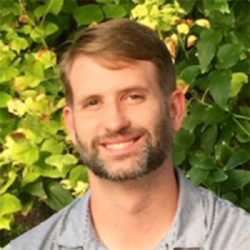
Over the past eight years, I’ve used PBL to help students in a Texas public high school explore many polarizing topics. Project topics have included immigration, capital punishment, energy policy, and school reform. Below are some of the lessons I have learned about exploring some of my community’s most divisive topics.
1. Limit debate. Focus on dialogue instead.
I know this is an incendiary statement for many teachers. We hold debate dear to our hearts. Many of us debated in high school (at least informally, in class discussions), and some of us have fond memories of coaching debate teams. While we know that debate can develop deep critical thinking and communication skills, I can attest that shifting the focus from debate to dialogue has been the single most effective change I have made in order to assist students in exploring divisive topics.
For one, contemporary hot-button issues are not exactly two-sided but actually more complex—but when we use debate as the main method to approach controversial issues, we often reinforce the over-simplistic and flawed narrative that today’s issues are binary. For instance, in a project that explored the topic of immigration in Texas, students in my school quickly realized that there were countless and shifting perspectives around this topic. Framing the project around debate would have falsely oversimplified the issue and made it more difficult for students to effectively explore the nuances of this incredibly complex topic. Even when students argue opposite sides of an issue to gain new perspectives, debate still reinforces black and white vision of polychromatic issues. Instead of debate, dialogue invites students to become immersed in the actual complexity of the topic.

When projects focus on debate, the learning goals are often about using evidence to prove one side is right and the other is wrong. Dialogue, on the other hand, can shift the focus toward intellectual growth and collective action. As opposed to debate, the learning goals in a dialogue-focused project can center around developing a more complex understanding of an issue in order to harmonize multiple perspectives and work toward creative solutions.
Real-world issues like immigration, criminal justice reform, and energy policy are not two-sided, and portraying them as such can limit understanding and diminish chances for meaningful collaboration. Instead of reproducing the limiting “us vs them” narrative often modeled in the political realm through debate, a focus on dialogue can give students opportunities to elevate their communication and problem-solving skills in order to build the crucial 21st century skills of listening to understand, grappling with ambiguity, and creating solutions through multiple perspectives.

2. Ensure Equitable and Structured Dialogue
For dialogue to function well in PBL it must be highly structured. Otherwise, it can devolve back into divisive debate or simply end up being conversations dominated by only a few voices. Therefore, to facilitate productive dialogue, I often look to the work of the School Reform Initiative whose discussion protocols are designed for equitable and focused conversations. In my projects we often modify SRI’s Microlab, Planting the Seed, and Chalk Talk protocols to help students share their ideas in ways that illuminate the connections across viewpoints. Through these practices, students can explore the complexities of current issues while examining ways to pursue collaborative action.
For instance, in a project examining the topic of energy policy, students used discussion protocols to grapple with questions like:
- How should we improve energy policy?
- What is our dream for energy policy 5 years from now? 50 years? 500 years?
- What important perspectives have we not yet heard, and how might they shape our understanding of this topic?
- What important questions have we not yet asked?
- What action will we take today to improve energy policy?
This approach to dialogue can help students embrace a spirit of inquiry when they meet with individuals who possess a multitude of perspectives on a topic. For example, in the project on energy policy, students asked these types of questions to a variety of experts who included a solar lobbyist, a geologist, oil field workers, a philosopher, an economist, Standing Rock activists, and many others. When students met with these adults, they approached their questioning with a spirit of respectful inquiry, not debate. Their learning goal was not to prove that their own viewpoint was correct, but instead it was to enrich the complexity of their understanding through critical examination of many perspectives. Through this process, their curiosity grew, and they yearned to seek out more viewpoints to further their understanding, instead of dismissing perspectives that differed from their own.

3. Be Courageous
It is tempting to stay away from exploring and discussing controversial issues in school. However, as prevailing national and global rhetoric becomes increasingly vitriolic and divisive, it is essential for teachers to help students become expert critical thinkers who can approach contentious issues with civility, deep knowledge, and skillful collaborative action. Thus, teachers need to be courageous in taking up the challenge of exploring contemporary issues in the classroom. Through a spirit of inquiry, and this includes genuinely exploring perspectives that are different from our own, teachers can trust their students to discover new and compassionate ways to address the world’s most challenging dilemmas.
Photos Courtesy of Borderland Collective

